- Background
- Composition and properties
- Contraindications
- Pharmacy and shop fees
- Home-made tea preparation
- Classic brewing
Kopor tea is interesting for both experienced herbalists and beginning teens. Still, the technology of preparation of the drink is identical to the harvesting of Chinese or Ceylon hardwood charges. Flower taste, rich amber color and light tartness are in no way inferior to the characteristics of tea blends, oolongs, so beloved by Europeans.

Historical background
Kopor tea, also known as ivan-tea, is brewed from fermented leaves of perennial perennial grass. The origin of the name dates back to the XII century, has several versions.
So, according to one of them, the plant was called "willow-tea", based on the similarity of grass with willow branches. The letter "N" was added a little later for euphony.
Another legend tells of a guy named Ivan in a red shirt, often walking among the green medicinal herbs. He was so remembered to his fellow villagers that his name remains forever in the name of the curative herbal tea.
Finally, it is worth remembering the village of Koporye near the Gulf of Finland. It was from this village that huge quantities of herbal tea were sent for export to Europe. By the way, this story should not be ignored at all.
The beginning of production of
It turns out that in the 17th century Russian merchants traded briskly for expensive Chinese tea. One of the landlords, who lived for some time in the Russian Embassy in China, witnessed the fermentation of a large batch of deciduous tea. The official realized that this business was simple, but profitable.
Returning to their homeland, an adventurous landowner organized a similar production of tea from the herb of cypress. In fact, he initiated the tea craft. Trade was brisk, but with one drawback - the product was very cheap compared to the overseas analog.
Masters found a way out by learning to falsify the product - to mix fermented spray with Chinese tea. Having organized warehouses in Koporye, folk craftsmen got help to send tea leaves to the Gulf of Finland to Europe and even made a solid competition to Indian tea.
The case ended with the fact that in the 19th century the Russian government imposed a ban on the production of "counterfeit" tea, finding in it a lot of flaws - taste, harm and the like. The reputation of Kopor tea remained questionable until the 21st century, and only now is the question raised about the invaluable benefits of this drink and the revival of old traditions.
Composition and properties of
Scientists have proved that Kopor tea is rich in important substances for the body. In all parts of the plant there are:
- tannin
- slime
- pectin
- hyperoside
- tannins
- cellulose
- lectin
- vitamin C
- lithium, potassium, calcium and other elements.
The unique composition of Kopor tea has a fairly wide range of usefulness. Infusion is used for various types of inflammation: the ear, throat, nose, as well as the treatment of gastritis, colitis, ulcers. Separately, pharmacists noted hemostatic and wound healing properties of grass, as well as a weak sleeping and laxative effects.
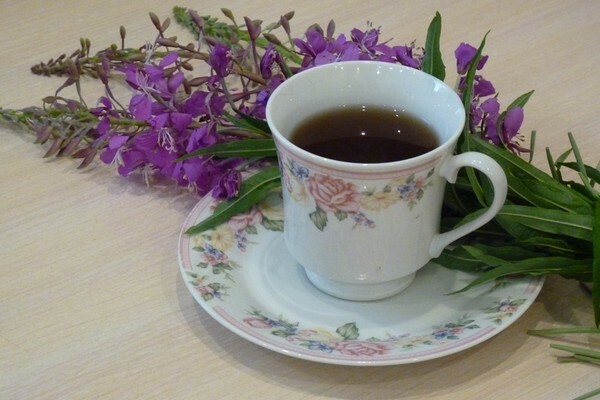
The whole list of useful properties can be expressed as follows. Kopor tea:
- soothes, normalizes sleep due to lack of caffeine
- normalizes metabolism
- removes skin inflammatory processes
- clears puffiness due to diuretic effect
- has a beneficial effect on digestive tract
- removes toxins with alcoholic intoxication
- blunts headache
- lowers blood pressure
- stimulates the production of collagen
- prevents caries.
Note! Brewed kiprej for 2 days does not lose useful properties.
Contraindications
Useful Kopor tea can cause harm to those who take sedatives, antidepressants. Being, as a matter of fact, a soothing and mild sedative, kiprej at times amplifies action of medicines that can lead to unpredictable consequences. Also, do not take herbal drink along with antipyretic drugs to avoid a sharp drop in body temperature.Pharmacy and shop fees
How to brew a pharmacy fee
The easiest way to prepare Kopor tea at home is to buy dry leaves of kipreya in a pharmacy( they are relatively inexpensive), pour them with room temperature water in a ratio of 1 tbsp.l.herbs for 1 glass of water, put boil over low heat for 15 minutes.
Next, you need to give the Cyprian the opportunity to brew, pass the useful components to the water. After 2 hours, it is recommended to strain the infusion and drink a third cup of Kopor tea before eating.
Note! Each pack of dried grass contains instructions or indications for use. Before brewing Kopor tea for medicinal purposes, it is advisable to carefully study all the points of instruction.
Shopyard tea with additives
A useful herbal drink is sold everywhere in many stores. Buy fermented tea with various additives is by no means a problem. Available kapreya with currants, oregano, lime or tavolga. In general, the manufacturer produces Kopor tea for every taste and for any needs.
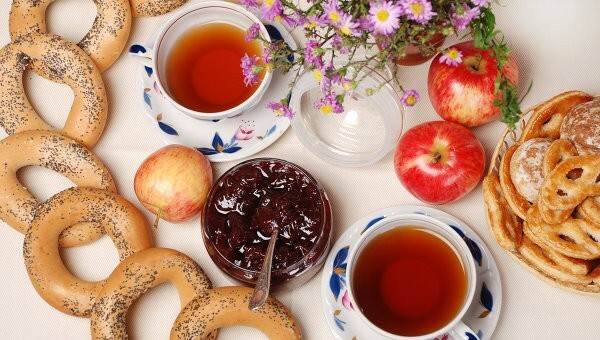
So, a mixture of willow-tea with currant leaves or linden is an excellent anti-cold remedy, and adding to the grass of the twig turns tea into a natural anesthetic drug.
Making home-made tea at
At home, preparing raw materials for Koporsky tea is not at all a problem. The main thing is that the treasured grass grows nearby.
The best time of collection is late morning, around 10-00, when the dew disappears from the fields. Interest is ½ stem with blossoming flowers.
Fermentation method - with
meat grinder Freshly harvested crop should be spread out in the shade so that for 1-3 hours the greens are slightly tied. The degree of readiness is well defined by the edges of the leaf of the spray, which first lose their natural resilience.
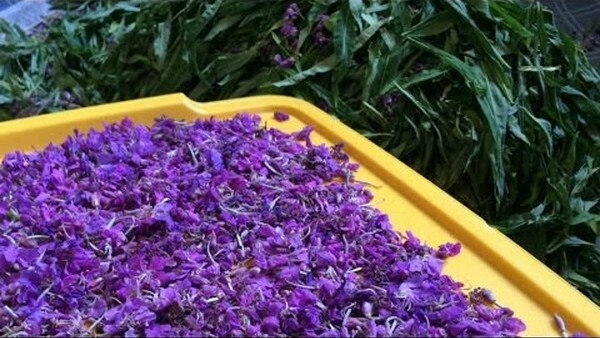
It's time to pass the grass through the meat grinder to make a granular stuffing. At this stage Kopor tea exudes the aroma of freshly cut hay and does not cause any emotion.
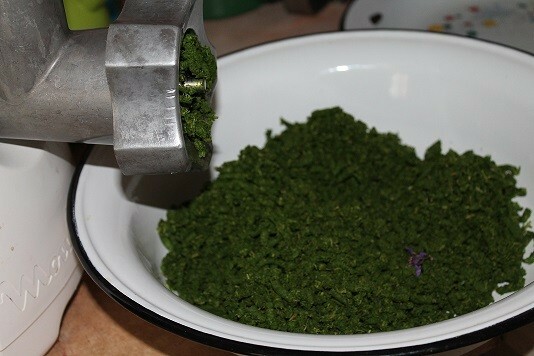
Next granules are poured into plastic or wooden bowls, baskets and sent to a warm place for fermentation. The fermentation time is about 24 hours. Here the main thing is not to miss the moment when the grass will smell not with hay, but fruit with honey hints.
The next step is to send the raw materials to the oven on the baking trays. The temperature is set no higher than 100 degrees. In this case, granules are important to stir frequently, achieving uniform drying of the product.
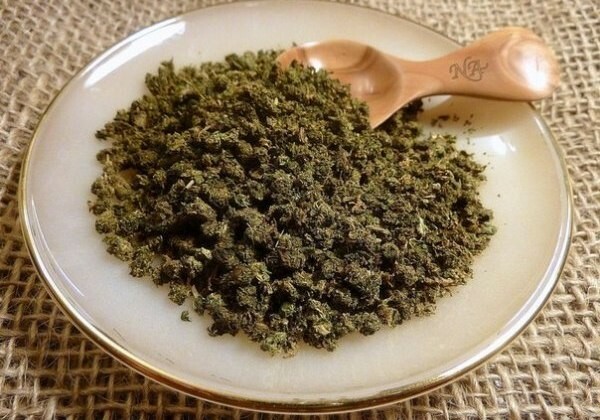
The finished collection is packed in a sealed container. Despite the stopping of oxidation during a month, the leaf of the spray will "come" to the ready, changing the taste and aroma.
Fermentation option - spinning with spindle
There is another option for preparing Kopor tea at home. So, instead of chopping the leaves and stems in the meat grinder, you can twist the tight spindles - sausages, literally squeezing out the juice from the greens.
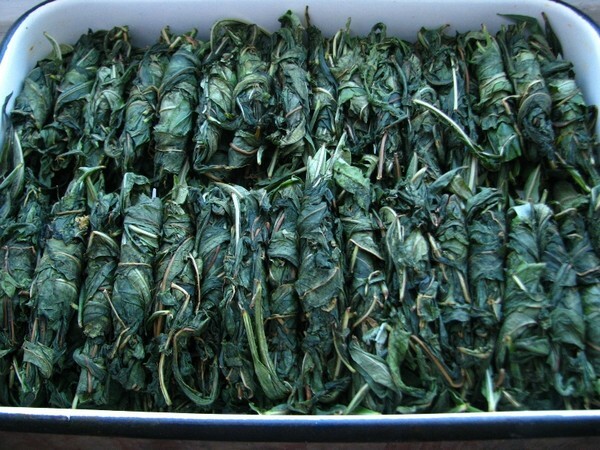
. The tea half-finished product is left in a saucepan for a day, covered with a wet cloth. After the specified time, the spindles are finely cut across and dried in the oven at 100 degrees. As a result, a drink with a taste and aroma that is significantly different from that presented in the above recipe is obtained.
Classic brewing
For the preparation of Koporsky tea, a traditionally dry collection( 2 tablespoons) is poured into 600 ml of hot water. Cyprus is allowed to brew for several minutes and drink in a warm form with the addition of sugar or honey.
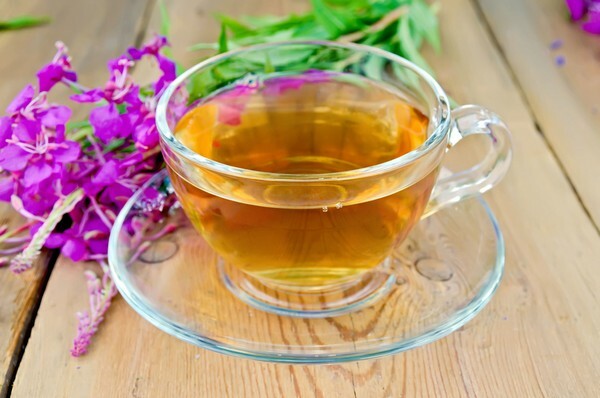
According to different recipes, the following are considered to be excellent additives to ivan tea:
- currant leaves
- peppermint leaves
- dried lemon peels
- dried raspberry berries
- lime blossom.
Natural ingredients radically change the aroma of the drink and make it even more useful.
Conclusion - Kopor tea is useful to the hostess in every house, both for medicinal purposes, and simply for a variety of tastes. This is an excellent alternative to expensive Chinese teas. Different methods of cooking will reveal the fragrant versatility of spraying. Maybe he will become the favorite drink of the whole family?
